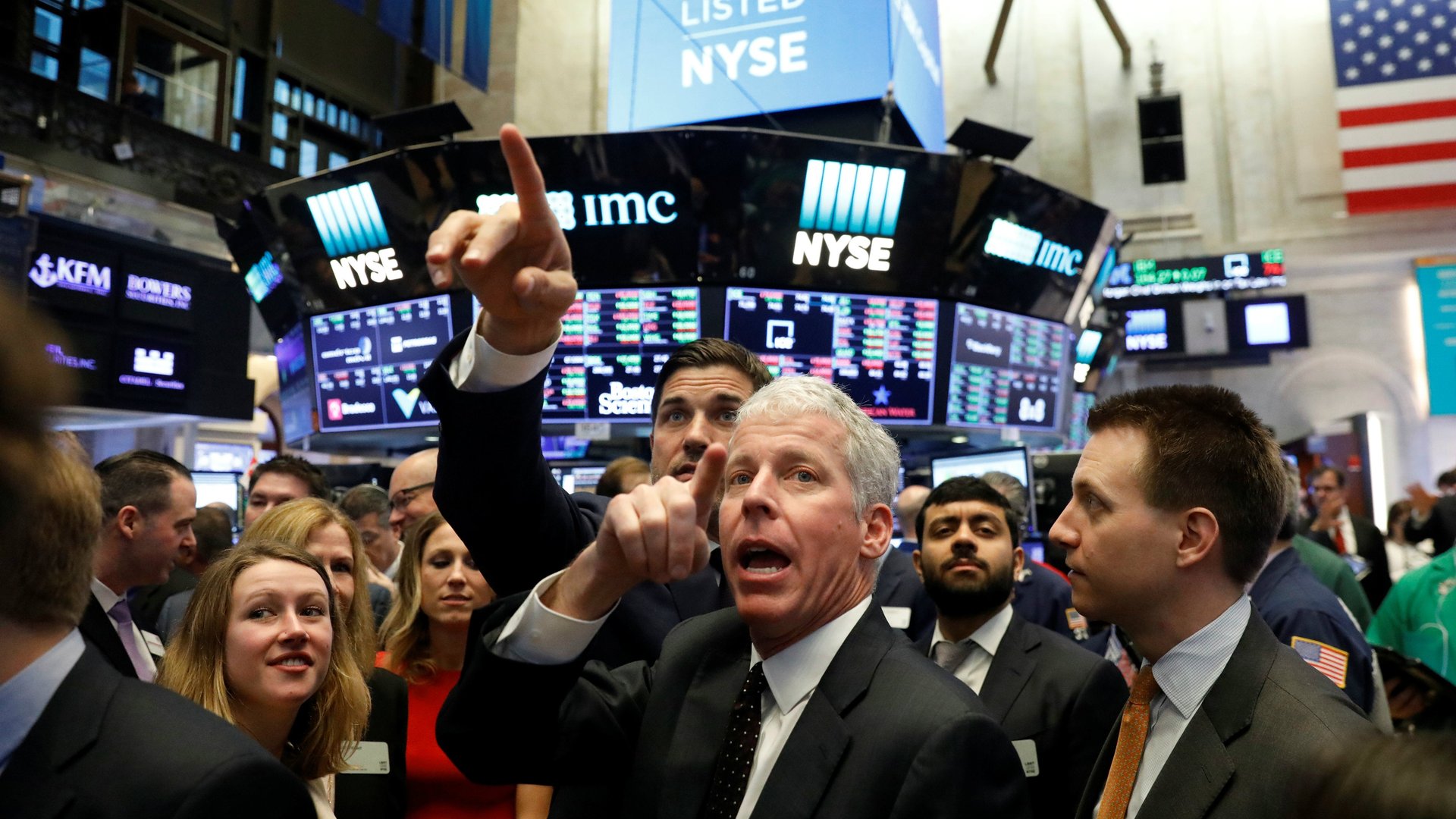Ignore the stock market rollercoaster, the sell-off in bonds is what matters
Lurking beneath the recent reversal in global stock markets was a much bigger market fall: a month-long sell-off in government bonds.


Lurking beneath the recent reversal in global stock markets was a much bigger market fall: a month-long sell-off in government bonds.
Since the start of the year, prices for developed-market sovereign bonds have been in decline, sending yields sharply higher. US 10-year Treasury yields climbed above 2.8% this week, the highest since early 2014. The German 10-year yield, Europe’s benchmark, climbed to its highest level since late 2015. A bull run that lasted more than three decades in the bond market might finally be over.
For some analysts, this move is overdue. The Federal Reserve has raised rates five times since late 2015, yet bond yields stayed stubbornly low. Part of the reason was that low inflation globally helped support demand for bonds.
But as global economic growth picks up and becomes more widespread, the Fed is set to raise rates at least three more times this year, amid hints that a tight labor market is finally leading to increases in wages. (Though there are several reasons to be cautious about the latest wage data.) That implies higher inflation, which is bad for bonds.
At last, the markets are “catching up,” said Nandini Ramakrishnan, a global market strategist at JPMorgan Asset Management. Analysts at UBS believe that markets are now pricing for the Fed to raise interest rates to about 2.5%-3%, from 1.25%-1.5% today, over the next two to three years.
You can see how the steepness of the yield curve has changed over the past five years in the interactive below:
The rise in bond yields sparked a panic among equity traders that wiped off trillions of dollars in value from global stock markets in recent days. As the thinking goes, higher interest rates will lead to tighter financial conditions, constricting the flow of capital, reducing the demand for equities. Higher bond yields also dampen demand for stocks because the comparative dividend yield is less attractive, meaning that investors can get decent relative returns from safer government bonds.
Analysts at Mizuho point out that the two-year Treasury yield is now higher than the S&P 500’s forward dividend yield, which prompts a “psychological test” for investors. So, what asset classes are worth investing in right now? “Equities had become bond-like in their ability to generate both return-on-capital and to give investors a feeling of safety of return-of-capital,” the analysts wrote in a note to clients. “Recent events may shatter that illusion, and have investors switching back to safer asset classes.”
However, Ramakrishnan says that historical analysis by JPMorgan shows that two-year Treasury rates need to be closer to 4% before there is a negative correlation with equity markets. The strength of the global economy and corporate earnings are still providing support for stocks. After the S&P 500 had its worst day in six years on Monday, falling 4.1%, it rose by 1.7% on Tuesday.
“The bond yield effect will last, whereas we’d expect the fundamentals to mean equities regain some of their losses from the past few days,” Ramakrishnan said.